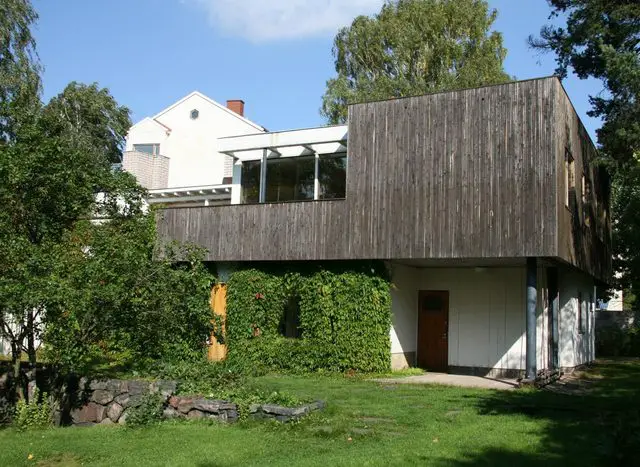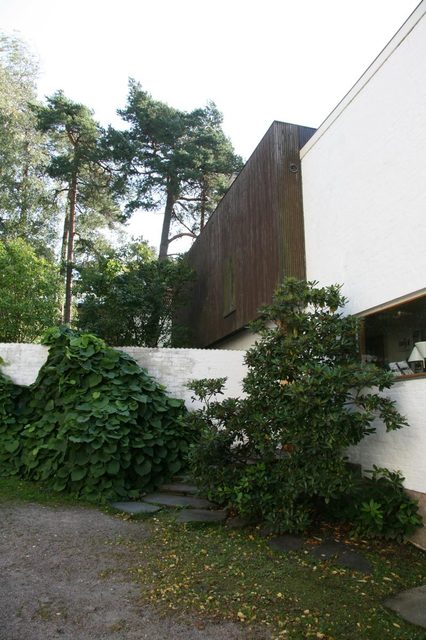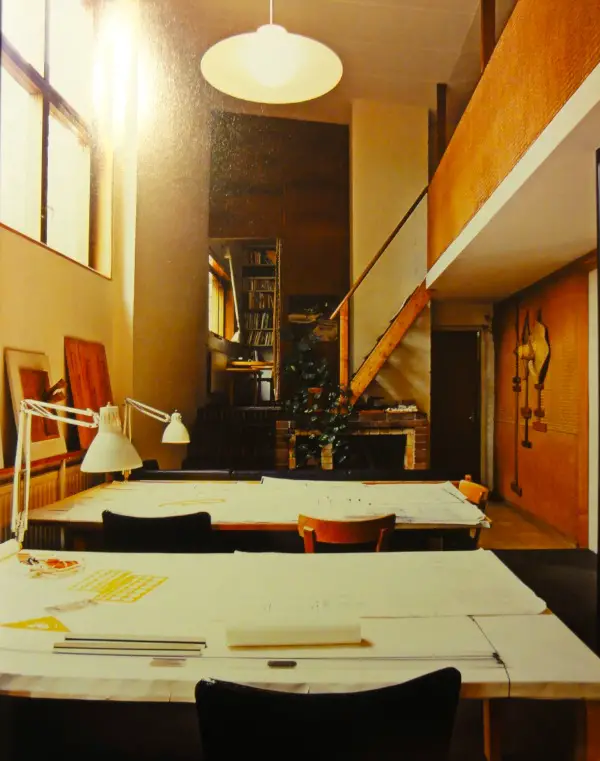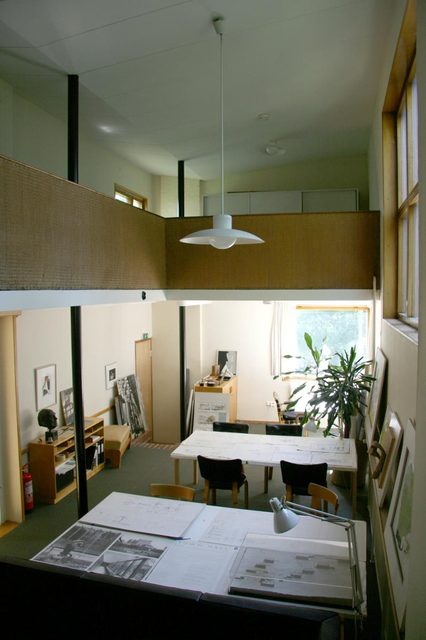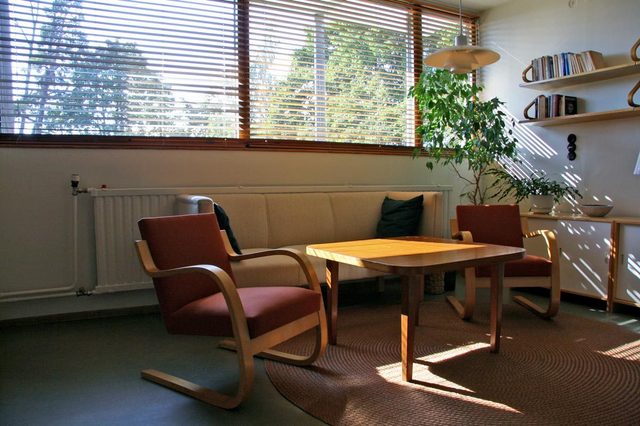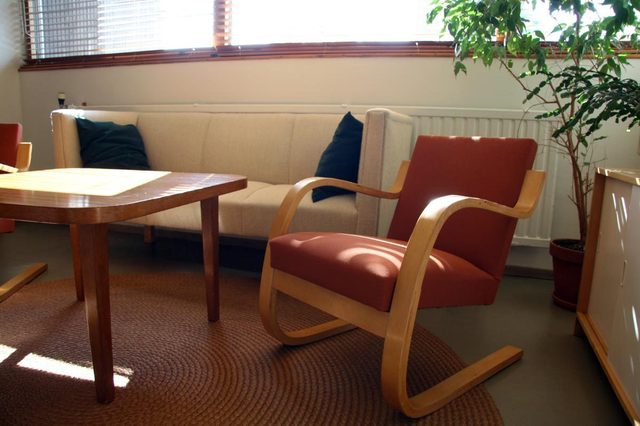Looking for better job opportunities, Alvar Aalto and his family moved from the small town of Turku to Helsinki in 1933. Besides job opportunities, Aalto also was also looking for the perfect location where he could build his future home. After living in two different apartments in Helsinki, the Aaltos bought a piece of land just outside the city.
Aalto completed the house plan in 1935 to move in one year later. Probably, the most remarkable aspect of the house is the combination of many of Alvar Aalto’s architectural and lifestyle values. The facade on the street side of the house is almost entirely enclosed with wooden boards except over the office reception’s window which overlooks the street. A light brick wall contrasting with the dark-stained vertical wood boards dominates the view.
The main entrance of the house is hidden in a corner of the wall and also fences the kitchen entrance area which further highlights Aalto’s need for an intimate and domestic space. According to several comparisons, the exterior of the Aalto house looks similar to that of the Walter Gropius’ House. The perfect relation between the building and the landscape gives it a warmer and gentle appearance.
The house was also designed to be Alvar Aalto’s studio and office apart from just being his residence. In fact, his workspace occupied a separate wing of the building.
The studio is spacious with a small internal balcony which was also used as an extra work space for scaled model projects. The light comes in the office from a large window on the North-West wall and from a corner window which opens into the garden. During the 40s and the 50s, Aalto’s office got many large projects including industrial buildings, pavilions for several international exhibitions and probably the most famous of them all, the Villa Mairea. The increasing number of projects required a bigger office. Aalto transformed the previous space in a private studio in 1955.

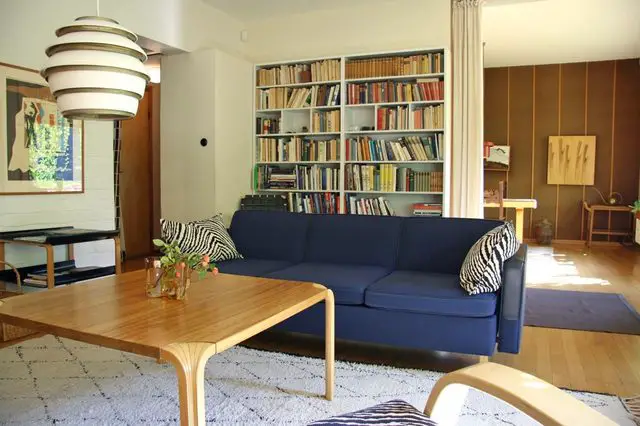
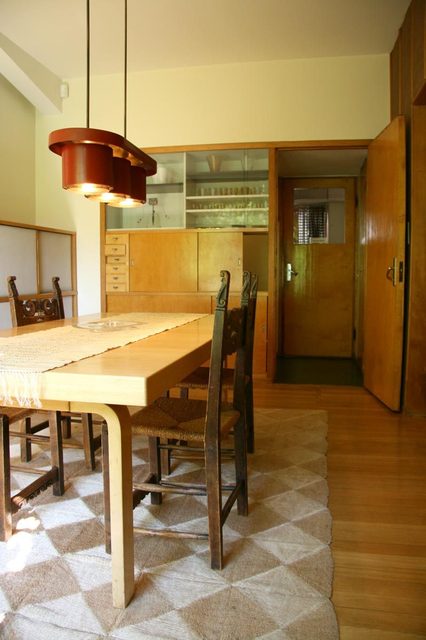
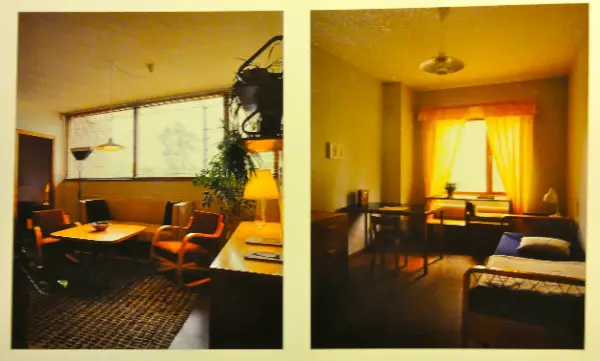
Aalto divided the rest of the house into two floors. The living and dining room with utilities at the first floor while the bedroom and a guest-room at the second floor.
Private vs. Public Spaces: The conceptual division of public and private spaces is also visible on the exterior. The most private areas are enveloped by dark-colored wood while the living and dining room overlook the garden through large windows. These rooms also help to separate the office from the family life.
The sliding door placed in the living room makes an almost invisible border which separates the two parts of the house. When open, there is a direct visual connection to the office and when closed, it makes the space private but it is still possible to hear the voices behind the partition. This mix of living, dining and working spaces is a characteristic of almost all of the Alvar Aalto houses.
Even though the architect preferred to join all the rooms into an uninterrupted sequence of spaces, every room could be separated from the others. Another one of Aalto’s favorite living concepts was the central hall which he conceived as a breakfast room for the family with a fireplace to give it a cozy atmosphere. The hall has direct access to the roof terrace which is also connected to the office wing of the building. The roof terrace proves that the outside spaces were as important for Aalto as the inner ones. Aino Aalto, wife of Alvar Alto took keen interest in the garden and planted some beautiful flowers and trees including the cherry and the apple trees.
The Aalto family’s favorite outside space was the stone-paved patio with the contiguous small pond.
Alvar Aalto considered every little detail to make the house cozy and warm. A significant example of this is the wall coverings and textile used in the dining room not only isolates the room from noises but also makes it aesthetically pleasing. The building is mainly made of steel columns and concrete elements with traditional brick walls.
Both the interiors and the exteriors are decorated with a variety of elements to mark the different uses of the space. For example, the exterior wooden panels are painted either white or dark brown to distinguish the private part of the house from the office.
The attention that Aalto gave to the surface structure and natural materials became one of the distinguishing architectural elements for all his buildings. What makes Aalto house unique is the combination of modern elements like a flat roof, cubic volume and the roof terrace, and traditional architectural designs like a fireplace in every room.
For architect and art historian Gustaf Strengell, the Alvar Aalto house was the perfect example of how the best of a tradition can continue and evolve in modern architecture. Alvar Aalto spent his entire life in this house with his first wife Aino, who unfortunately died in 1949 and later with his second wife Elissa. Today the house is a museum owned by the Aalto Foundation.
